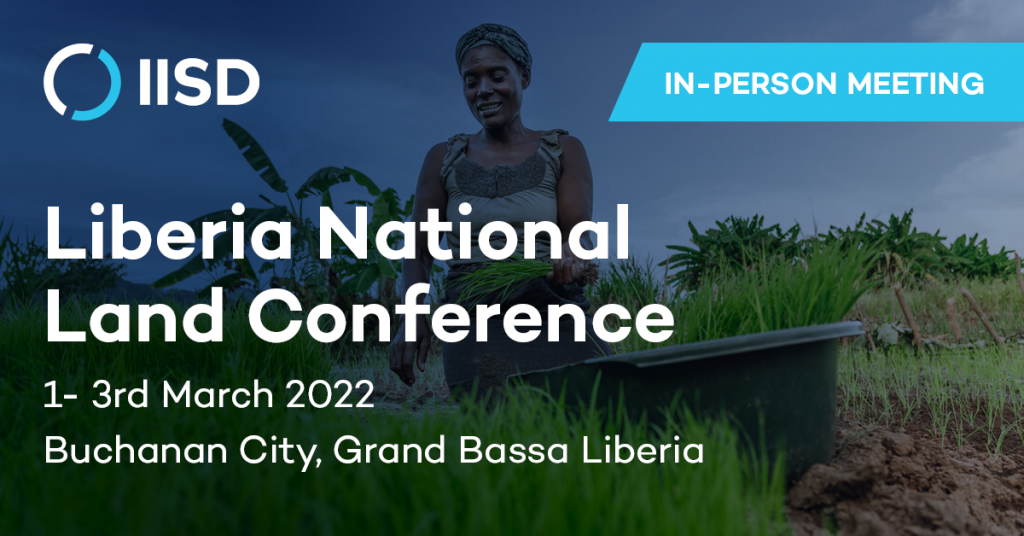Liberia National Land Conference

To help address some of the historical injustices of Liberia, a set of reforms was instituted by the post-war government of H.E. Ellen Johnson Sirleaf, who served as the 24th President of Liberia from 2006 to 2018. Among these reforms was the reform of the land sector. After a 5-year land reform process, in 2013, a policy framework called the Land Rights Policy (LRP) was adopted; 5 years later, the hailed Land Rights Act (LRA) was enacted in 2018. Within the context of inherited widespread food and land tenure insecurity, the historic passing of the LRA is the first step in a long and complex process ahead. Against this background, the National Land Conference will take stock of successes achieved so far, analyze and highlight challenges, identify opportunities, and generate recommendations and commitments for the way forward.
IISD and the FAO will co-present a Policy Brief on Linkage of Tenure Rights to Responsible Agricultural Investment (RAI) and Food Security during this event.
Related resources
Liberia National Land Conference
IISD and the FAO will co-present a Policy Brief on Linkage of Tenure Rights to Responsible Agricultural Investment (RAI) and Food Security during the National Land Conference in Liberia on March 1–3, 2022.
Building Bridges: The State of Nature-Based Investments
Join us for a panel at the Building Bridges conference in Geneva, Switzerland, to discuss the state-of-play of nature-based investments and the potential opportunities they present.
Through Her Lens: Women leading change in sustainable agriculture and market inclusion
Despite the critical role that women play in agricultural production, they still do not have equal access to global agricultural supply chains on terms that benefit them.
A Municipal Perspective on the Value of Natural Infrastructure
This webinar will showcase examples the cost-effectiveness of natural infrastructure from a municipal perspective. Focusing on what municipalities need—what evidence and numbers they rely on, and what tools and planning processes are required to ensure that natural infrastructure is assessed alongside traditional infrastructure for cost-effectiveness.